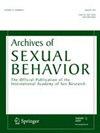While recent research has advanced our understanding of asexuality, very little effort has been devoted to examining biomarkers and possible prenatal correlates of asexuality. In response, we recruited a large international sample (N = 1634 women and men) to explore associations between sibling composition and asexual sexual orientation (n = 366) and to replicate previously reported sibship effects in individuals with a same-sex attracted orientation (n = 276) and bisexual sexual orientation (n = 267) compared to heterosexual individuals (n = 725). Our analyses used two of the most recent statistical approaches that attempt to disentangle older sibling effects from family size effects (Ablaza et al., 2022; Khovanova, 2020). We found that higher overall number of siblings (female fecundity effect) predicted higher probability of asexuality in men and having fewer older sisters and being an only-child predicted higher probability of asexuality in women. Regarding the same-sex attracted orientations, higher number of older sisters increased likelihood of being a gay man (sororal birth order effect). Having fewer older sisters was associated with bisexual sexual orientation in women and higher overall number of siblings predicted increased likelihood of bisexuality in men. We did not find a fraternal birth order effect for gay, lesbian, bisexual or asexual groups using the Ablaza et al. (2022) method but the effect was significant for gay men using the Khovanova (2020) analytic approach. These findings point to potential sibship-related contribution to development of asexuality in women and men but future studies will need to replicate these results and articulate potential underlying mechanisms.


